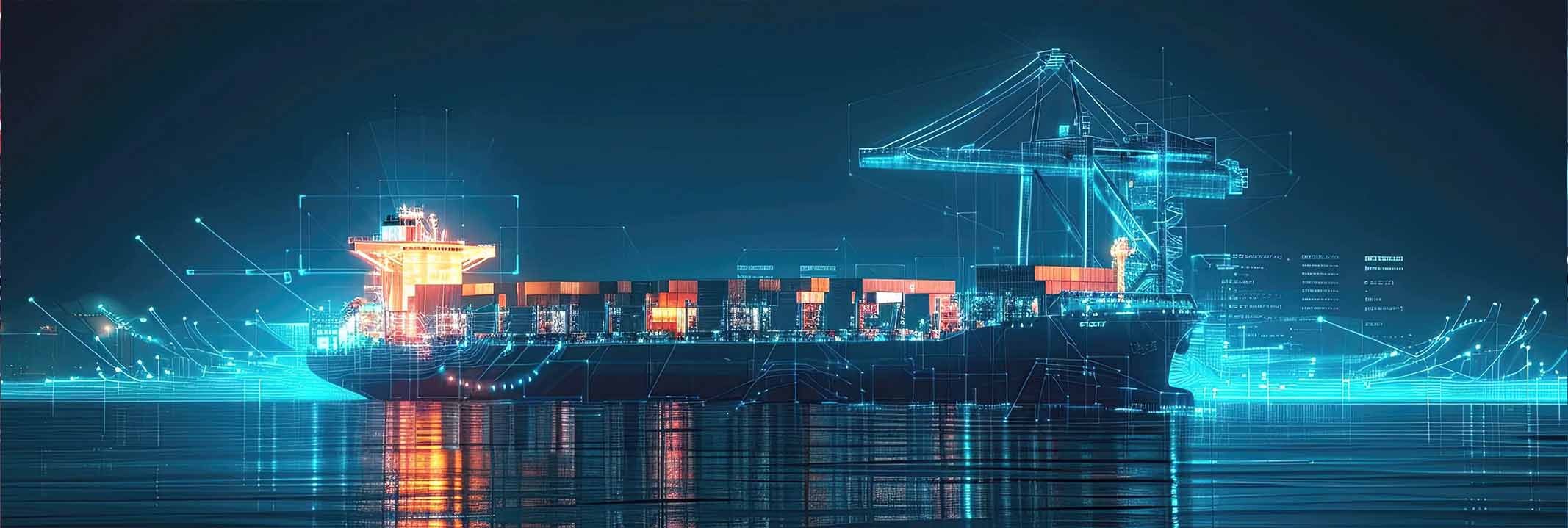
11 Feb Enabling hinterland connectivity & maritime competitiveness through Port Community System
The Asia-Pacific region, home to some of the world’s busiest ports and trade routes, is witnessing a technological revolution in the maritime supply chain. In contrast, some countries are landlocked and surrounded by inaccessible terrains. This is where the confluence of multi-modal capabilities comes into play. Several land-locked Asian countries are connected to transhipment hubs in the region’s existing and upcoming large ports. Yet, the movement of cargo between the hinterland dry ports and the seaports can be made more seamless.
According to reports, 24-36 hours is the average time of cargo movement from the hinterland to the ports. This means a further fortnight of shipping travel with the cargo will escalate delays. With geopolitical tensions, cost and time further escalate, making it more difficult for all industry stakeholders. Therefore, the missing part of the puzzle to achieve this full potential is technology. Adopting cutting-edge technologies has a major role to play here as they help enhance operational efficiency, reduce costs, and improve sustainability in both modes of transport.
Technology acceleration
Technology adoption in the maritime industry across the Asia Pacific has accelerated in recent years. According to a report by the International Maritime Organization (IMO), over 75% of major ports in the region are investing in digital infrastructure to enhance efficiency.
Key advancements include advanced truck slot management systems, 5G powered port systems offering real-time data interchange, IoT sensors offering cargo tracking, predictive maintenance, and environmental monitoring, and optimising shipping routes through AI-based traffic control systems are some of the key technology interventions. These technologies will act as a catalyst in facilitating faster cargo movement between the hinterland and ports as well as from the source to the destination seamlessly.
How are Port Community Systems transforming the maritime ecosystem?
One of the most significant technological advancements in the Asia-Pacific maritime sector is the adoption of Port Community Systems. These digital platforms streamline communication between port authorities, shipping lines, customs, and logistics providers. Port Community System enhances transparency, reduces paperwork, and facilitates smoother cargo movements.
The Port Community System is revolutionising the maritime ecosystem by enabling real-time data exchange between stakeholders, which improves coordination and reduces bottlenecks. The digitalisation of customs procedures through the Port Community System has significantly expedited clearance times, cutting them by up to 50%, as demonstrated in some advanced ports in the region.
Ports that have integrated the Port Community System have reported a 20% increase in handling efficiency. Additionally, the Port Community System minimises manual processes and delays, leading to an operational cost reduction of 15–25%.
Future outlook and challenges
As the maritime industry in Asia-Pacific continues to embrace technology, the future holds even more transformative potential. Blockchain-based smart contracts could further streamline shipping transactions, and autonomous vessels may soon become a reality.
Nonetheless, challenges such as cybersecurity threats, high implementation costs, and the need for regulatory standardisation must be addressed. Governments and private stakeholders must collaborate to develop robust cybersecurity frameworks and invest in scalable digital infrastructure.
Conclusion
Technology is reshaping the maritime supply chain in the Asia Pacific, driving efficiency and competitiveness. From 5G-enabled automation to AI-driven analytics, digital transformation is revolutionising port operations and cargo management.
The rise of Port Community Systems further accelerates this change, creating a more connected and efficient maritime ecosystem. As adoption grows, the region is set to become a global leader in smart maritime logistics, setting benchmarks for the future of global trade.

